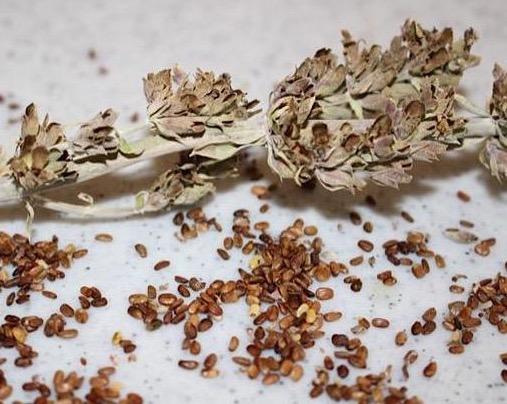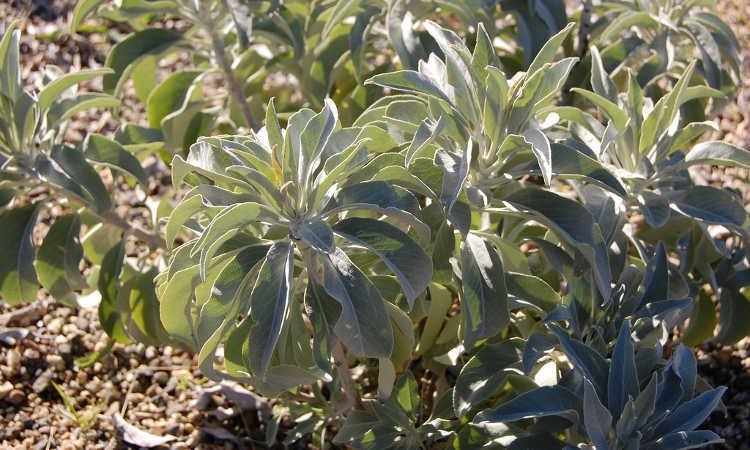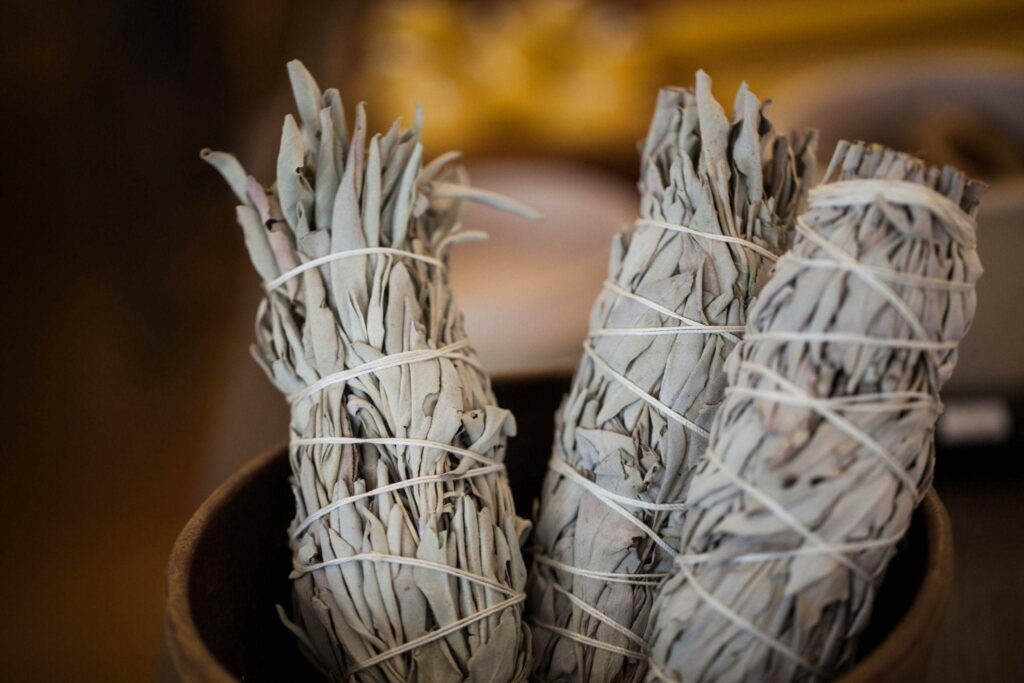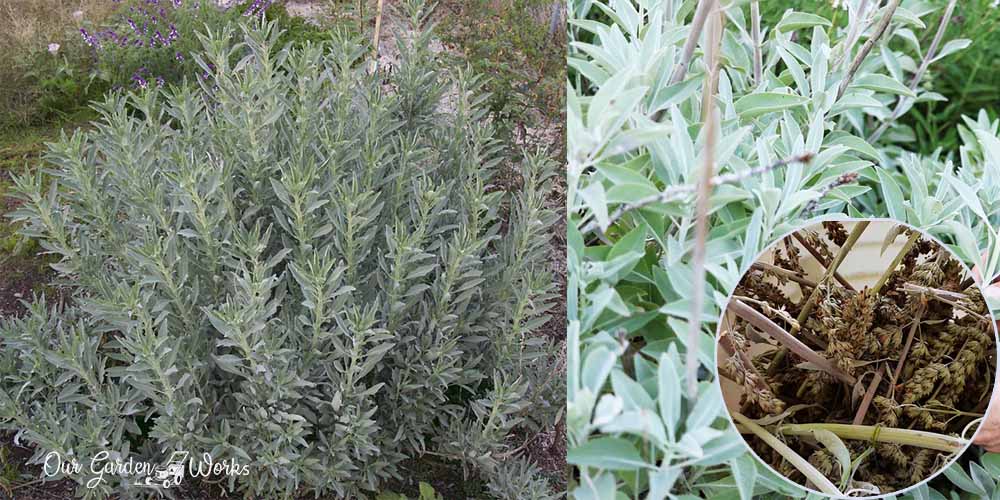Have you ever heard of a sacred plant? White sage is one of the specific plants that is considered a sacred plant in many regions and has a long and rich history that dates back to our early ancestors.
Learning how to grow a white sage is a good way to cultivate and preserve the culture of using them.
White sage has many health benefits and a link to spiritual healing. In this post, we will share the proper ways on how to grow white sage and what other benefits we can get from it.
What is White Sage?
White sage or Salvia Apiana is an evergreen shrub that mostly grows in the southwestern United States and northwestern Mexico. It is a perennial shrub that is also known as bee sage, grandfather sage, buffalo sage, and sacred sage.
Some Californian tribes also had their own names for this shrub, which includes:
- Kasiile: Gabrielino tribe (Los Angeles hillside)
- Qas’ily: Chumash people (Santa Barbara coastline)
- Qaashil: Payómkawichum tribe (Luiseno)
- Shlhtaay: Kumeyaay people (modern-day San Diego)
According to history, white sage originally came from the high deserts and dry areas. It thrives in dry soil, full sun, and requires little water throughout the growing season. It is commonly found on the dry slopes and yellow-pine forests of Southern California to Baja California.
Native Americans are the first ones to use white sage. They use this during ceremonies and rituals. They believe that burning white sage is a method to communicate with the spiritual realm.
It is also their way to connect with the spirit of the plants, animals, and the earth. They call the method of using white sage in rituals is smudging.
White sage is a shrub that can grow up to 51 to 59 inches (1.3 to 1.5 meters). Its flowers can be white to pale lavender. Its leaves are whitish evergreen that can grow up to 1.18 to 3.54 in (3 to 9 cm).
You may also notice some hair that covers its leaves. The hairy parts help the leaves release oil when rubbed which produces a strong scent.

Steps on How To Grow White Sage
There are two ways on how you can start propagating white sage. One is through planting seeds, and the other one is through the use of stems.
Keep in mind that these methods have low success rates which are around 20 to 30%. To make sure that you’ll be able to grow white sage successfully, it is better to plant multiple seeds and transplants.
Here are the ideal growing requirements of white sage:
- Sun requirements: Full sun
- Soil requirements: Well-drained and nutrient-rich dry soil with a soil PH of 6.5 to 7.0.
- Water requirements: an inch per week
- Temperature requirements: 70°F – 85°F
Below are the simple steps that you may follow in growing white sage:
Method 1: Growing White Sage From Seeds

- For indoor gardening, choose a seedling tray and fill it with nutrient-rich soil or potting soil. In a garden setting, choose an area with rich soil and direct sun exposure of 6 hours or more. Also, consider soil drainage in choosing an area.
- Sprinkle your white sage seeds across the soil and loosely cover it with another layer of soil just enough to bury the seeds.
- Water the seeds to activate them for germination.
- Keep your seeds in a location that is in the 70°F – 85°F temperature range.
- Make sure that the seed receives enough light. If growing indoors, provide full light from a grow light. If not, make sure to place them in direct sunlight near a window or door.
- Once you notice that your plant is starting to germinate, water it once a week. Do this only when you feel that the soil is too dry. Make sure that the soil is always moist but not too much so that it becomes soggy.
- The expected duration before the seeds start to germinate is around two to three weeks. Once they develop their first set of leaves, you may start transplanting them.
Method 2: Growing White Sage From a Cutting
- Prepare a specific soil for white sage by mixing 1/3 medium-grained sand, 1/3 perlite, and 1/3 seed starting compost. Moisten it with water before placing the soil mix into your chosen pots.
- Take cuttings from newly-forming leaves at the top of the white sage. Cut at least four to six inches from above the node of the leaves.
- Dip the cuttings in water or you can also dip it into a rooting hormone to help stimulate the growth of the roots.
- Plant the stem by pressing it into the soil. Check the lowest leaf nodes of the cutting and make sure that it is at least 1/2 inches beneath the surface of the soil.
- Make sure that the temperature is between 70 to 85°F until the cutting produces roots. Keep it partly shaded while it adjusts to its new environment.
- Do not water the soil except when the surface near the cutting already feels dry. Do not water too much, just enough to dampen the soil.
- After four to six weeks, check the cutting to see if it has already produced roots. You can check this by giving the cutting a light tug to check if there’s already a resistance.
- Keep the cuttings in the shade for a few more weeks before transplanting them into their permanent location.
A Quick Guide: How To Transplant a White Sage Seedling
- Find the best location to transfer the white sage. Make sure that the soil is well-draining and is fully exposed to the sun.
- Improve the soil drainage by mixing compost or sand into it. Soggy soil is not good for the growth of white sage.
- Dig a hole and place your transplant in the middle. Then fill it back in.
- Do not water the soil except when it gets too dry.
- After the plant produces flowers, trim them to boost its growth.

9 Helpful Tips in Growing White Sage
Learning how to grow a white sage can be challenging, especially if you’re a newbie gardener.
So, here are 9 tips for a successful harvest and propagation of white sage:
- Choose small-sized containers if you are going to grow white sage. Plants in larger containers are prone to shock during the transplanting process.
- If you are to grow white sage in containers, you may want to do it during the fall season. This is the best time since it is the season when the rain is abundant. This will help the soil in establishing a new home for the plant.
- If you are going to grow white sage by using seeds in a seedling tray, the best time to plant it is during the spring season. Use small containers instead of large ones to avoid the growth of fungus that might kill the plant. Since the containers are large, there’s a tendency that they will stay wet for a longer duration.
- Since white sage only needs a little water, it is best to use a mister bottle for them.
- Due to the low success rate of growing white sage, it is advisable to put several seeds in each peat pellet or small pot.
- During harvest, dry the leaves first before wrapping the white sage into a bundle. This will help avoid the growth of mildew.
- Do not water the white sage too much because it is drought-tolerant.
- Make sure to grow white sage in places with warm weather which is at least 70°F – 85°F. It may kill the plant if it is met with freezing temperatures.
- White sage prefers sandy soil. This type of soil is best when mixed with compost as it makes the soil more well-draining.

Vitamins and Nutrients Found in White Sage
Aside from being a sacred plant for some tribes, white sage is also packed with vitamins and other nutrients, such as:
- Vitamin K: Helps in preventing excessive bleeding.
- Iron: Aids the body to produce hemoglobin and promote good blood circulation.
- Vitamin B6: A water-soluble vitamin that helps with brain health.
- Calcium: Helps in maintaining and building strong bones and teeth.
- Manganese: Plays a role in a variety of chemical processes in our body. It helps with protein and amino acid digestion and utilization. It also helps activate enzymes for metabolism
Health Benefits of White Sage
It is proved that with proper usage white sage can provide several health benefits for the human body.
This includes the following:
Sinus Infection Treatment
You can either drink white sage as tea or inhale the aroma of the burned sage. Eucalyptol is a component of white sage that helps in reducing sinus inflammation pains
Can Calm a Sore Throat
One benefit of drinking sage tea is it can reduce the secretion of mucus from your throat and relieve painful sore throat.
Helps with Menstrual Cramps
White sage contains phytoestrogens which help relieve period cramps and other menstrual pains. It also helps with some menopausal symptoms such as hot flashes and excessive sweating.
Natural Antioxidant
White sage contains polyphenols which are chemical compounds from plants that act as antioxidants.
Antioxidants are compounds that slow down the oxidation process of cells. These substances help prevent further damage to the cells caused by free radicals.
White sage also contributes to some health benefits like lower risks of cancer and brain function improvement.
Good For Oral Health
White sage has properties that can help in preventing dental plaque.
Some claims were also noted that white sage’s antimicrobial effects help oral problems. This includes mouth ulcers, infected gums, throat infections, and dental abscesses.
Can Help Ease Diarrhea
One known traditional remedy for diarrhea is consuming fresh sage. This can help relax your guts to ease the pain.
May Help With Skin Aging
Some studies claim that extracts from white sage can help fight some signs of aging. The study suggests that it helped improve facial wrinkles.
Frequently Asked Questions (FAQs)
What kind of soil should I use in growing white sage?
A sandy and well-draining soil is a must. Sandy type with a mixture of compost is the best option.
What fertilizer should I use to grow a white sage?
White sage doesn’t need fertilizers as it can grow even in conditions with low nutrients.
Which is better? Growing white sage through seeds or cutting stems?
Since both methods have low success rates, the method that will best suit you will depend on the availability of the seeds.
If you are in an area where it is difficult to find quality white sage seeds, it is best to do stem cutting.
But if you want a higher chance of growing white sage successfully, growing from seeds is better.
How often do I have to water the white sage?
Too much water can kill the white sage. Since this plant is a drought-loving type, you can water it only when the soil feels dry. However, do not enthusiastically water it, use a mister to dampen the soil.
Are there pests or diseases to watch out for when growing white sage?
Here are some of the pests/diseases that might harm your grown white sage and some ways on how to manage them:
- Aphids: Remove aphids by a direct stream of water sprayed in the plant. You can also use other predators to keep the aphids away. To do this, put a sticky band around the base of the stem to attract the ants (this is available in local nurseries).
- Whiteflies: You can either vacuum the insects or spray them with water.
- Flat and spider mites: Shake the bugs loose from the plant. Use a piece of white paper under the leaves to avoid letting them fall into the other parts of the plant.
- Powdery mildew: Avoid overwatering the plant to avoid attracting fungus in your plants. You can also use neem oil as a preventive measure.
- Mint rust: Remove the affected area to prevent spread. Avoid watering the plant too much and provide enough space for the air to flow on the leaves.
Is there a specific pH level required in growing white sage?
The suitable soil pH level for white sage is neutral, from 6.5 to 7.0 only. Since it cannot grow in shady areas, this plant must be exposed to direct sunlight while planted in dry or slightly moist soil.
How many bundles can I get from one plant of white sage?
This will depend on the size of the plant and if it grows abundantly. You may increase the leaf production of white sage by trimming it at least in its 2nd year.
Final Thoughts
Sadly, white sage is becoming an endangered shrub in the wild. This is due to the demand and interest of people in using them, especially with the several purposes it has to offer.
Now that you have learned the history, benefits, and proper way of growing white sage, you can easily grow them in your garden.
By planting your own, you will not only get your supply of white sage but you can also beat the challenge of growing this one-of-a-kind shrub.
We hope that this post helped you learn how to grow white sage. If you find this post useful, please share it with your friends and colleagues.
Also, share your experience with your white sage gardening journey in the comment section below!

I thought ants and aphids had a symbiotic relationship. A bit confused how attracting ants could possibly help to keep aphids away.
Hi there, just corrected the word in the FAQs section. So we mean: “Managing ants is one way of controlling the aphid population. With fewer ants to defend them, aphid numbers will drop. This way, the aphids are exposed to predators and their numbers will dwindle.”